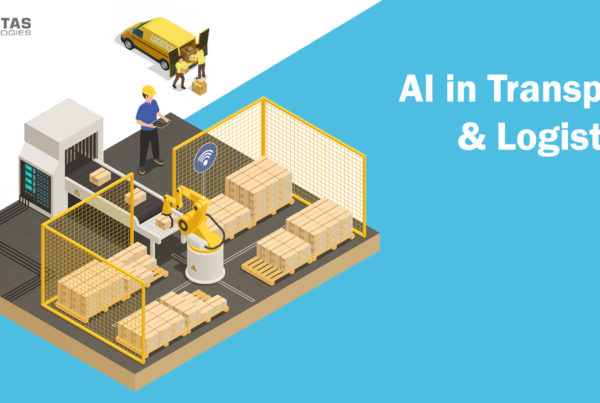
Introduction
Cloud technology is being envisioned as the next big paradigm in computation. The cloud is an architecture of software and hardware resources in the data centers that provide dispersed services over a network or the Internet to fulfill the users’ requirements. Its vast range of benefits makes cloud technology very promising for IT applications. However, there are a few issues that are hindering its wider adoption. One of those significant barriers is data security and data privacy in IoT, which also encompasses other issues related to compliance and trust.
Naturally, manufacturers might hesitate in storing critical and confidential manufacturing data with third-party service providers. So, is your valuable data actually secure? And if not, what is the solution? Firstly, we will understand the fundamentals and the benefits of cloud technology and edge technology.
What is Cloud Technology?
Simply put, cloud technology or cloud computing is on-demand access, through the Internet, to computing resources – data storage, development tools, applications, servers (physical servers and virtual servers), networking capabilities, and more – hosted in a remote data center. You pay only for the cloud services that you use, helping reduce your operational and maintenance costs, run your infrastructure better, and scale your capacity according to spikes and dips in traffic. With the capabilities of the cloud, you can offload some or most of the expenses associated with purchasing, installing, configuring, and maintaining your on-premise resources.
Today businesses of all sizes are embracing cloud technology to benefit from the greater data availability, considerable cost-cutting and data redundancy that the cloud technology offers as compared to the traditional infrastructure. In fact, according to Accenture, 95% of business leaders are currently utilizing sophisticated cloud services for their enterprises.
The cloud data centers are managed by cloud service providers or CSPs. Some of the prominent ones are Google Cloud Platform (GCP), Microsoft Azure and Amazon Web Services (AWS).
What is Edge Technology?
Gartner defines edge computing or edge technology as “a part of a distributed computing topology in which information processing is located close to the edge – where things and people produce or consume the information”.
The basic idea behind edge computing is that it brings data storage and computation closer to the devices where it is being gathered instead of relying on a distant central location. This architecture is majorly adopted to prevent latency issues from affecting the application’s performance and avoid high bandwidth costs.
Gartner predicts that by 2025, 75% of enterprise-generated data will be produced outside the centralized data centers. Transferring so much data would put a serious strain on the Internet, meaning higher latency and congestion. By deploying computational and storage resources near data sources, edge technology can operate a number of devices over a smaller and much more efficient network with ample bandwidth, making latency and congestion virtually negligible. Manufacturers can benefit from edge technology by keeping a close eye on their operations. The edge also provides a way for companies to integrate IoT applications such as predictive maintenance close to the machines.
What is Data in terms of Machine Vision Inspection?
Data is the lifeblood of machine vision. For instance, take the manufacturing space. Say you wish to install a machine vision solution for the inspection of car parts. Firstly, there is the training data. We need to provide copious amounts of sample manufacturing data to develop an effective inspection system. Then, there is the manufacturing data generated by each camera which is to be analyzed by our vision solution. The application of modern technologies such as AI, Machine Learning and Deep Learning is even more data-intensive. And so, arises the need for an effective architecture to manage data and computation.
Can Inspection be Automated Without Compromising the Data Privacy?
Naturally, companies are concerned about the confidentiality and security of sensitive data with the cloud services providers, be it the data related to their IoT devices or related to their vision application.
The first step is to closely research your cloud provider and check whether all the necessary security cloud computing mechanisms are in place. More cloud providers have entered the market in recent years. So, it is critical to ensure that the service you choose offers data security, privacy and integrity. Also, ensure that the sensitive pieces of data are stored in protected locations and accessible only by authorized users. Other methods to secure your data include data masking and encryption.
For machine vision applications, you should ensure that you store only a limited number of images for training the model and not all the images captured on the assembly line. Only when there is a need to update the model or perform some fine-tuning, you should leverage the cloud.
Conclusion
In this blog post, we foremostly discussed the concerns that are preventing the wider adoption of cloud technology. Next, we understood the fundamentals and benefits of cloud technology and edge technology. Next, we discussed the importance of data and its security in machine vision solutions. Lastly, we discussed some measures that can be taken to ensure optimal data security and data privacy in IoT applications across industries.






WOW just what I was looking for. Came here by searching for do binary options trading work
I have to thank you for the efforts you’ve put in writing this website. I am hoping to view the same high-grade blog posts from you later on as well. In truth, your creative writing abilities has inspired me to get my own, personal blog now 😉
Great website. Lots of helpful info here. I am sending it to several pals ans additionally sharing in delicious. And certainly, thank you for your effort!
Hello, all is going fine here and ofcourse every one is sharing information, that’s actually excellent, keep up writing.